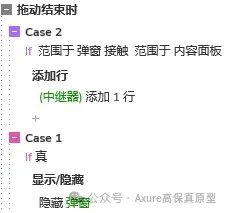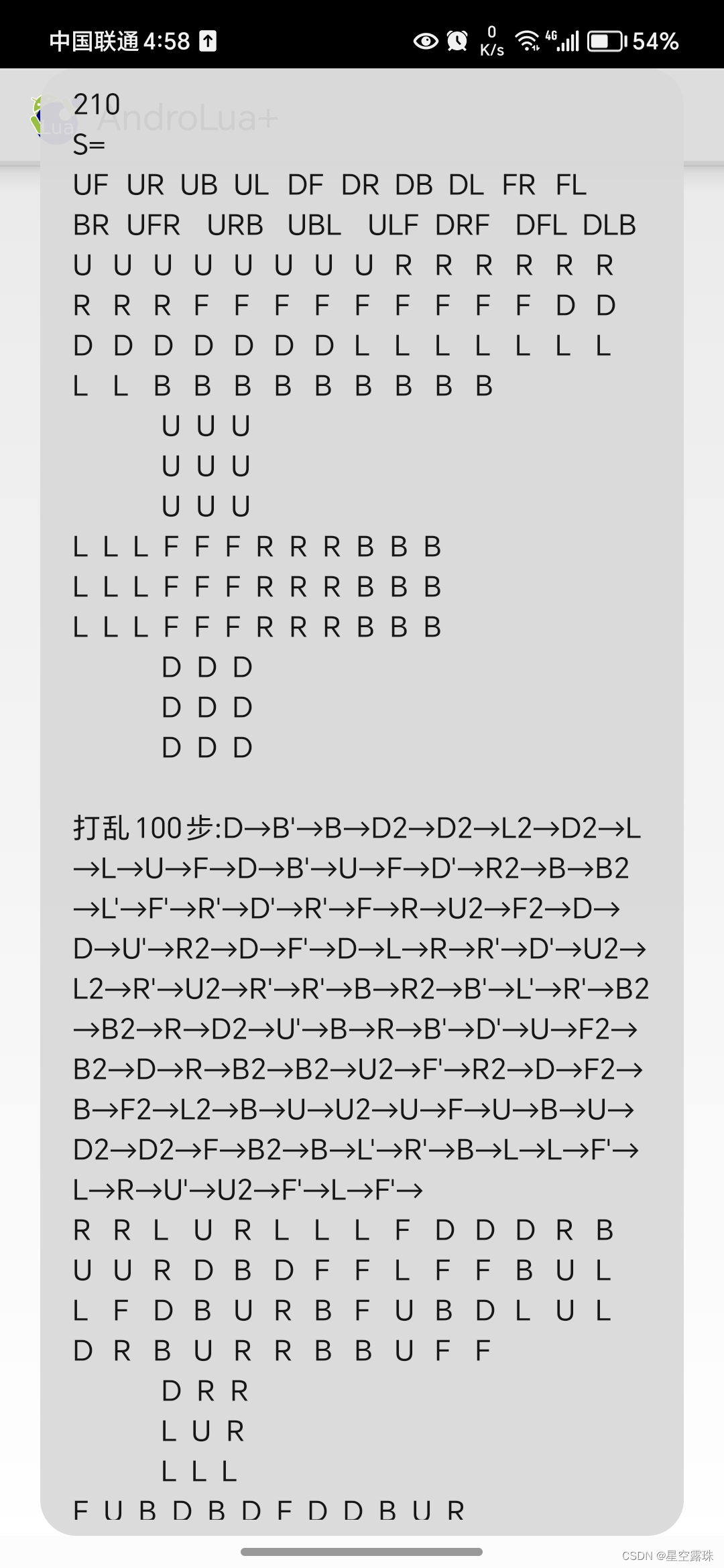torchregister_forward_hook_0">torch的register_forward_hook作用
register_forward_hook 是 PyTorch 提供的一个方法,用于在模型的前向传播过程中注册一个钩子函数。这个钩子函数可以在前向传播过程中对指定层的输入和输出进行操作或记录。它常用于调试、特征提取或修改模型行为。
以下是 register_forward_hook 的主要作用和用法:
主要作用
- 记录中间层输出:可以在模型前向传播过程中记录任意层的输出,以便进行进一步分析。
- 修改中间层输出:可以在前向传播过程中修改某一层的输出。
- 调试和可视化:便于调试模型,查看某一层的输入和输出数据,以便理解模型的内部工作机制。
使用示例
以下是一个简单的示例,展示如何使用 register_forward_hook 来记录中间层的输出:
import torch
import torch.nn as nn
from torchvision import models# 定义钩子函数
def hook_fn(module, input, output):print(f"Inside {module.__class__.__name__} forward hook")print("Input: ", input)print("Output: ", output)# 加载预训练的 VGG16 模型
vgg16 = models.vgg16(pretrained=True)# 注册钩子到某一层,例如第一个卷积层
hook = vgg16.features[0].register_forward_hook(hook_fn)# 创建一个示例输入
input_tensor = torch.randn(1, 3, 224, 224)# 前向传播
output = vgg16(input_tensor)# 移除钩子
hook.remove()
解释
- 定义钩子函数
hook_fn:这个函数将会在前向传播过程中被调用,并接收三个参数:模块本身(module)、输入(input)和输出(output)。 - 加载模型:加载预训练的 VGG16 模型。
- 注册钩子:在 VGG16 模型的第一个卷积层(
vgg16.features[0])上注册钩子。 - 前向传播:用一个示例输入进行前向传播,钩子函数会被调用,并打印出输入和输出。
- 移除钩子:前向传播后,移除钩子以避免对后续操作产生影响。
使用 register_forward_hook 可以让你深入了解模型的内部行为,并进行必要的调整和调试。
如何修改中间层输出
要修改中间层的输出,可以使用 register_forward_hook 方法,在钩子函数中直接修改输出数据。下面是一个示例,展示如何在钩子函数中修改中间层的输出:
import torch
import torch.nn as nn
from torchvision import models# 定义钩子函数,修改中间层的输出
def hook_fn(module, input, output):print(f"Before modification, output: {output}")modified_output = output * 2 # 对输出进行修改print(f"After modification, output: {modified_output}")return modified_output# 加载预训练的 VGG16 模型
vgg16 = models.vgg16(pretrained=True)# 注册钩子到某一层,例如第一个卷积层
hook = vgg16.features[0].register_forward_hook(hook_fn)# 创建一个示例输入
input_tensor = torch.randn(1, 3, 224, 224)# 前向传播
output = vgg16(input_tensor)# 移除钩子
hook.remove()
解释
- 定义钩子函数
hook_fn:这个函数接收三个参数:模块本身(module)、输入(input)和输出(output)。在函数内部,对输出进行修改,例如将输出乘以 2。 - 加载模型:加载预训练的 VGG16 模型。
- 注册钩子:在 VGG16 模型的第一个卷积层(
vgg16.features[0])上注册钩子。钩子函数将在前向传播时被调用。 - 前向传播:用一个示例输入进行前向传播,钩子函数会被调用,修改该层的输出。
- 移除钩子:前向传播后,移除钩子以避免对后续操作产生影响。
注意事项
- 在钩子函数中,返回修改后的输出,这样模型的前向传播就会使用修改后的数据。
- 如果不需要修改输出,只是记录或查看输出,可以省略返回值部分。
- 确保在适当的时间移除钩子,以免对模型的其他部分造成意外影响。
通过这种方式,你可以在模型的前向传播过程中动态地修改中间层的输出,以实现自定义的行为或进行实验。
钩子中定义的参数会进行反向传播吗
在 PyTorch 中,使用 register_forward_hook 定义的钩子函数确实会影响反向传播。如果你在钩子函数中修改了中间层的输出,那么这些修改后的输出将会被用于计算损失并进行反向传播。这意味着修改后的输出会影响后续层的梯度计算,并最终影响模型参数的更新。
这里是一个具体的示例,展示如何在钩子函数中修改中间层的输出,并验证这些修改会参与反向传播:
import torch
import torch.nn as nn
from torchvision import models
import torch.optim as optim# 定义钩子函数,修改中间层的输出
def hook_fn(module, input, output):print(f"Before modification, output: {output}")modified_output = output * 2 # 对输出进行修改print(f"After modification, output: {modified_output}")return modified_output# 加载预训练的 VGG16 模型
vgg16 = models.vgg16(pretrained=True)# 注册钩子到某一层,例如第一个卷积层
hook = vgg16.features[0].register_forward_hook(hook_fn)# 创建一个示例输入和目标
input_tensor = torch.randn(1, 3, 224, 224)
target = torch.tensor([1]) # 假设目标是一个简单的分类任务# 定义损失函数和优化器
criterion = nn.CrossEntropyLoss()
optimizer = optim.SGD(vgg16.parameters(), lr=0.01)# 前向传播
output = vgg16(input_tensor)# 假设我们只使用最后一个输出进行分类
output = output.view(output.size(0), -1)
logits = vgg16.classifier(output)# 计算损失
loss = criterion(logits, target)# 反向传播
optimizer.zero_grad()
loss.backward()# 打印某一层的梯度
print(f"Gradients at layer 0: {vgg16.features[0].weight.grad}")# 移除钩子
hook.remove()
解释
- 定义钩子函数
hook_fn:这个函数将输出乘以 2,并返回修改后的输出。 - 注册钩子:在 VGG16 模型的第一个卷积层上注册钩子。
- 定义输入和目标:创建一个示例输入张量和目标张量。
- 定义损失函数和优化器:使用交叉熵损失函数和随机梯度下降优化器。
- 前向传播:进行前向传播,钩子函数会在第一个卷积层被调用,修改该层的输出。
- 计算损失和反向传播:计算损失并进行反向传播。修改后的输出会影响梯度计算。
- 打印梯度:打印第一个卷积层的权重梯度,验证反向传播确实考虑了钩子函数的修改。
- 移除钩子:前向传播和反向传播后,移除钩子。
通过这个示例,你可以看到在钩子函数中修改中间层的输出确实会影响模型的反向传播和梯度计算。因此,使用钩子函数时需要谨慎,以确保模型训练的正确性。
请写一个简单的全连接网络说明register_forward_hook
好的,下面是一个使用 PyTorch 构建的简单全连接神经网络(MLP),并演示如何使用 register_forward_hook 来修改中间层的输出。
import torch
import torch.nn as nn
import torch.optim as optim# 定义一个简单的全连接网络
class SimpleFCNet(nn.Module):def __init__(self):super(SimpleFCNet, self).__init__()self.fc1 = nn.Linear(784, 128)self.fc2 = nn.Linear(128, 64)self.fc3 = nn.Linear(64, 10)def forward(self, x):x = torch.flatten(x, 1) # 展平输入x = self.fc1(x)x = torch.relu(x)x = self.fc2(x)x = torch.relu(x)x = self.fc3(x)return x# 定义钩子函数,修改中间层的输出
def hook_fn(module, input, output):print(f"Before modification, output: {output}")modified_output = output * 2 # 对输出进行修改print(f"After modification, output: {modified_output}")return modified_output# 实例化模型
model = SimpleFCNet()# 注册钩子到第二个全连接层(fc2)
hook = model.fc2.register_forward_hook(hook_fn)# 创建一个示例输入和目标
input_tensor = torch.randn(1, 1, 28, 28) # 假设输入是28x28的单通道图像
target = torch.tensor([1]) # 假设目标是一个简单的分类任务# 定义损失函数和优化器
criterion = nn.CrossEntropyLoss()
optimizer = optim.SGD(model.parameters(), lr=0.01)# 前向传播
output = model(input_tensor)# 计算损失
loss = criterion(output, target)# 反向传播
optimizer.zero_grad()
loss.backward()# 打印某一层的梯度
print(f"Gradients at layer fc2: {model.fc2.weight.grad}")# 移除钩子
hook.remove()
解释
- 定义简单的全连接网络
SimpleFCNet:包含三个全连接层(fc1、fc2和fc3),以及 ReLU 激活函数。 - 定义钩子函数
hook_fn:在钩子函数中,修改输出为原输出的两倍,并打印修改前后的输出。 - 实例化模型:创建
SimpleFCNet的实例。 - 注册钩子:在第二个全连接层(
fc2)上注册钩子。 - 创建示例输入和目标:假设输入是 28x28 的单通道图像,目标是一个分类标签。
- 定义损失函数和优化器:使用交叉熵损失函数和随机梯度下降优化器。
- 前向传播:进行前向传播,钩子函数会在
fc2层被调用,修改该层的输出。 - 计算损失和反向传播:计算损失并进行反向传播,修改后的输出会影响梯度计算。
- 打印梯度:打印
fc2层的权重梯度,验证反向传播确实考虑了钩子函数的修改。 - 移除钩子:前向传播和反向传播后,移除钩子。
通过这个示例,你可以看到在钩子函数中修改中间层的输出确实会影响模型的反向传播和梯度计算。
为什么nn.ReLU(inplace=True)注册的钩子输入的值直接把负值变成了0
nn.ReLU(inplace=True) 的行为会将输入张量的负值直接修改为 0,这是因为 inplace=True 参数使得 ReLU 操作在原地(in-place)进行修改,即不创建新张量,而是直接修改输入张量本身。因此,当你在 register_forward_hook 中查看或修改输入张量时,已经经过 ReLU 处理,负值已经变为 0。
以下是一个示例代码,展示这种行为:
import torch
import torch.nn as nn
import torch.optim as optim# 定义一个简单的两层卷积网络
class SimpleConvNet(nn.Module):def __init__(self):super(SimpleConvNet, self).__init__()self.conv1 = nn.Conv2d(1, 16, kernel_size=3, padding=1)self.conv2 = nn.Conv2d(16, 32, kernel_size=3, padding=1)self.relu = nn.ReLU(inplace=True)self.fc1 = nn.Linear(32 * 7 * 7, 10) # 假设输入图像大小为28x28,经过两次2x2池化,最终大小为7x7def forward(self, x):x = self.conv1(x)x = self.relu(x) # ReLU 激活x = nn.MaxPool2d(2)(x) # 2x2 池化x = self.conv2(x)x = self.relu(x) # ReLU 激活x = nn.MaxPool2d(2)(x) # 2x2 池化x = torch.flatten(x, 1) # 展平输入x = self.fc1(x)return x# 定义钩子函数,查看输入和输出
def hook_fn(module, input, output):print(f"Input: {input}")print(f"Output: {output}")# 实例化模型
model = SimpleConvNet()# 注册钩子到 ReLU 层
hook = model.relu.register_forward_hook(hook_fn)# 创建一个示例输入和目标
input_tensor = torch.randn(1, 1, 28, 28) # 假设输入是28x28的单通道图像# 前向传播
output = model(input_tensor)# 移除钩子
hook.remove()
解释
- 定义简单的卷积网络
SimpleConvNet:- 包含两个卷积层(
conv1和conv2),每层之后有inplace=True的 ReLU 激活函数和 2x2 最大池化层。 - 最后一个全连接层(
fc1)用于输出分类结果。
- 包含两个卷积层(
- 定义钩子函数
hook_fn:- 钩子函数中,打印 ReLU 层的输入和输出。
- 实例化模型:创建
SimpleConvNet的实例。 - 注册钩子:在 ReLU 层上注册钩子。
- 创建示例输入:
- 假设输入是 28x28 的单通道图像。
- 前向传播:
- 进行前向传播,钩子函数会在 ReLU 层被调用,打印 ReLU 层的输入和输出。
- 移除钩子:
- 前向传播后,移除钩子。
输出说明
- 在前向传播过程中,当执行到 ReLU 层时,
hook_fn钩子函数会被调用。 - 如果 ReLU 使用
inplace=True,输入张量在被传递到钩子函数时,已经在原地被修改,负值已经变为 0。 - 如果你不希望这种行为,可以将 ReLU 的
inplace参数设置为False,这样 ReLU 激活不会修改输入张量本身,而是创建一个新的输出张量。
例如,将 self.relu = nn.ReLU(inplace=False) 可以避免这种行为。






